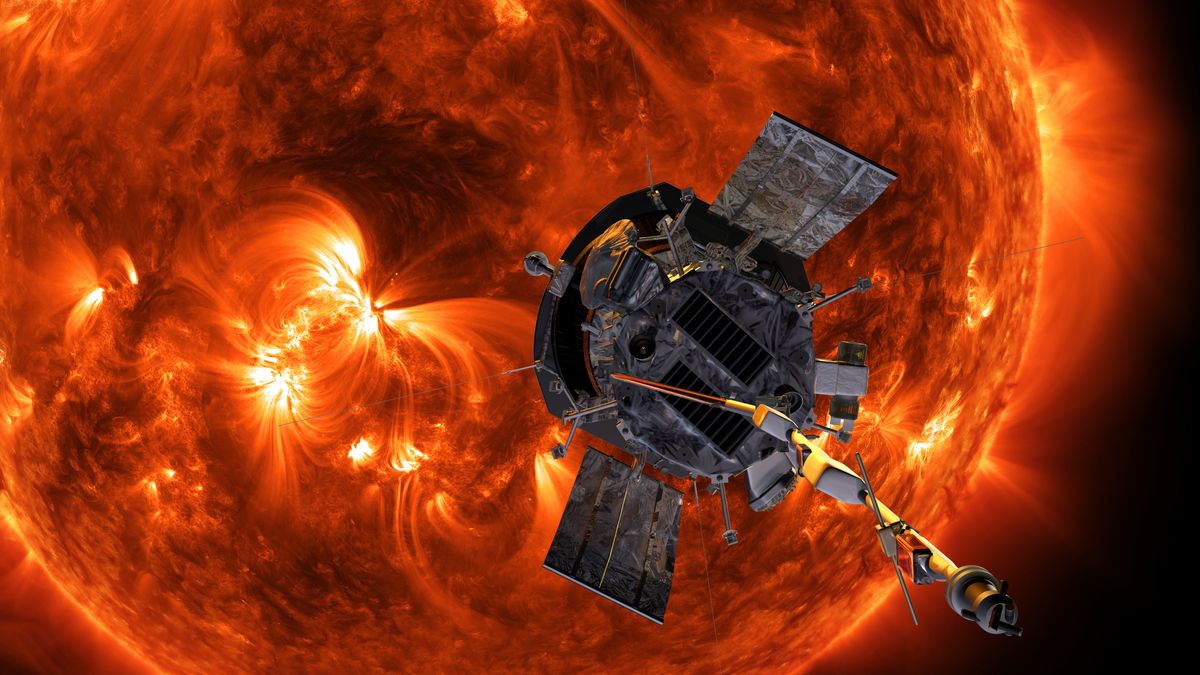NASA's Parker Solar Probe May Solve 500-Year-Old Sun Mystery

NASA's Parker Solar Probe is on its way to another close encounter with the sun, where investigators hope the spacecraft will solve a long-standing solar mystery: Why is the sun's outer atmosphere millions of degrees hot (Fahrenheit or Celsius), while the surface is only about 10,000 degrees Fahrenheit (5,500 degrees Celsius)?
One theory says that this spectacular heating comes from small magnetic waves moving back and forth between the sun's surface and upper atmosphere. New research based on a previous NASA mission suggests that the key lies in a region of the sun called the zone of preferential heating.
"Whatever the physics is behind this superheating, it's a puzzle that has been staring us in the eye for 500 years," Justin Kasper, lead author on the new research, a University of Michigan professor of climate and space sciences, and principal investigator for the Solar Wind Electrons Alphas and Protons (SWEAP) instrument onboard the probe, said in a statement. "In just two more years, Parker Solar Probe will finally reveal the answer."
Related: NASA's Voyager 2 Went Interstellar the Same Day a Solar Probe Touched the Sun
From what scientists know so far about this superheating, it's a strange process. Some individual chemical elements warm up to different temperatures, and some heavy ions (or charged particles) get even hotter than the sun's core.
All this heating makes the solar atmosphere, also known as the corona, balloon above the sun's surface. That atmosphere is visible during total solar eclipses, when the moon passes in front of the sun. For a few moments during those events, the corona shines brightly in the sky.
Also embedded in the zone of superheating is a phenomenon known as Alfvén waves, which are small magnetic waves in an electrically conducting fluid (such as plasma) inside a magnetic field. At the edge of this superheating zone, the solar wind (a constant stream of charged particles emanating from the sun) moves fast enough to escape the waves. But below that, the solar wind particles pingpong and accelerate due to waves pummeling the particles from every direction.
Get the Space.com Newsletter
Breaking space news, the latest updates on rocket launches, skywatching events and more!
What scientists really want to know is just how far above the sun's surface this heating extends. While Parker isn't close enough to the sun to have reached that point yet, the researchers looked for it using decades of solar wind observations from NASA's Wind spacecraft, which launched in 1994 and is still working. Specifically, the scientists focused on observations of helium, a common element in the sun.
The scientists tracked the temperature of helium at different altitudes above the sun. The rate of temperature rise in that element diminishes as ions in the solar wind collide with each other. Scientists found that the superheating zone ends somewhere between 10 and 50 solar radii above the surface of the sun.
Further analysis, however, suggested that the outer edge might be connected with the Alfvén point, the distance above the surface at which particles in the solar wind escape the sun. Previous research has shown that the Alfvén point can rise and fall as the sun gets more or less active.
So, Kasper and his co-author examined Wind's data year by year. What they found surprised them: The outer boundary for the superheating zone and the Alfvén point "moved in lockstep in a totally predictable fashion, despite being completely independent calculations," Kasper said.
Both those lines will continue to move as Parker Solar Probe sneaks closer and closer to the sun, so the researchers also calculated when the spacecraft would intersect with those boundaries. That moment, when the probe can send back data from these crucial regions, should happen in 2021 — giving scientists a whole new look at our sun.
A paper based on the research was published Tuesday (June 4) in The Astrophysical Journal Letters.
Editor's Note: This article was corrected to say the top of the sun's photosphere hits 10,000 degrees F, not 6,000.
- What's Inside the Sun? A Star Tour from the Inside Out
- NASA's Parker Solar Probe Is Headed to the Sun. So, What's Next?
- NASA's Parker Solar Probe Mission to the Sun in Pictures
Follow Elizabeth Howell on Twitter @howellspace. Follow us on Twitter @Spacedotcom and on Facebook.
Join our Space Forums to keep talking space on the latest missions, night sky and more! And if you have a news tip, correction or comment, let us know at: community@space.com.

Elizabeth Howell (she/her), Ph.D., was a staff writer in the spaceflight channel between 2022 and 2024 specializing in Canadian space news. She was contributing writer for Space.com for 10 years from 2012 to 2024. Elizabeth's reporting includes multiple exclusives with the White House, leading world coverage about a lost-and-found space tomato on the International Space Station, witnessing five human spaceflight launches on two continents, flying parabolic, working inside a spacesuit, and participating in a simulated Mars mission. Her latest book, "Why Am I Taller?" (ECW Press, 2022) is co-written with astronaut Dave Williams.











